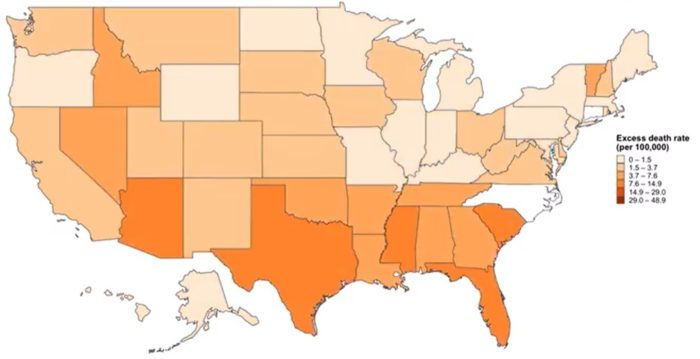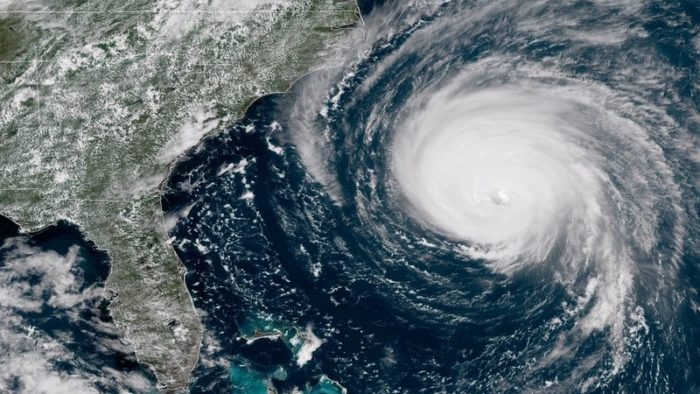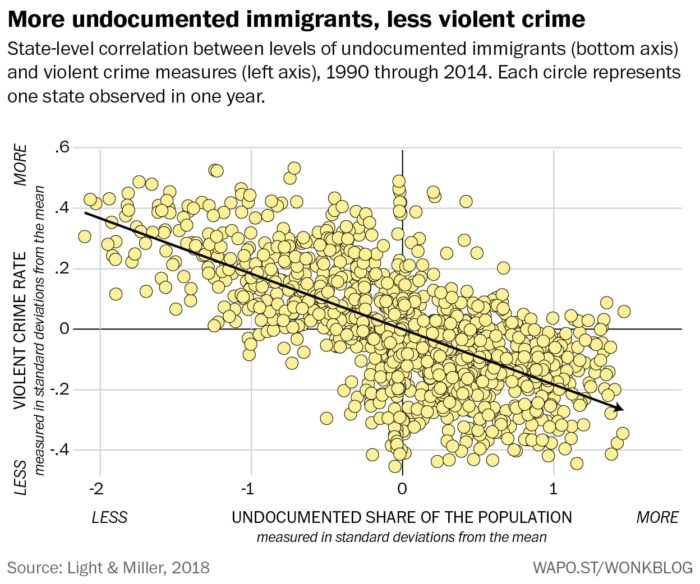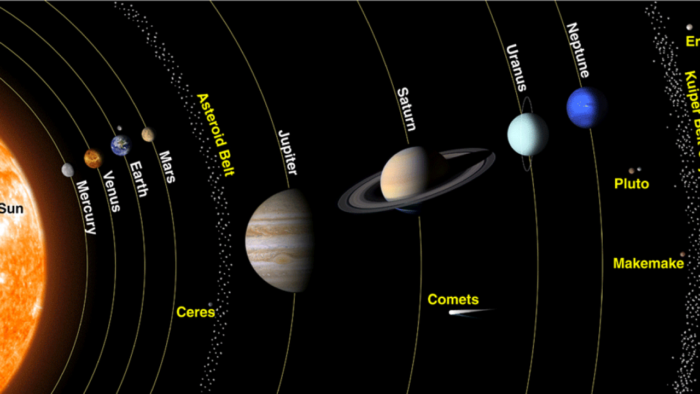Oct
13
2020
 How many people have died in the US so far from the COVID-19 pandemic? It depends on how you count the numbers. The official count of US COVID-19 deaths is 214,000. This number is often reported as “at least” this amount, because this is a compilation of all deaths where COVID-19 was officially listed as a cause of death. Experts recognize that this is likely to be a gross underestimation, because people may die from the disease at home without ever being diagnosed.
How many people have died in the US so far from the COVID-19 pandemic? It depends on how you count the numbers. The official count of US COVID-19 deaths is 214,000. This number is often reported as “at least” this amount, because this is a compilation of all deaths where COVID-19 was officially listed as a cause of death. Experts recognize that this is likely to be a gross underestimation, because people may die from the disease at home without ever being diagnosed.
In any such system, regardless of how careful you are, there are going to be false positives and false negatives. When it comes to the cause of death there are very specific coding guidelines. COVID-19 must have directly lead to the death of the individual. Laboratory confirmation is strongly encouraged, but doctors may code COVID-19 as a probable cause of, in their clinical judgement, the patient had COVID-19 and it fits the epidemiology, even if they did not get a test. When COVID-19 is severe enough to kill, it is a fairly recognizable clinical condition. This does open the door to other fatal viral respiratory infections to be coded as COVID, but these instances are likely to be rare.
States report their data differently. Some only report confirmed cases. Some report confirmed and probable. Some states get their numbers from death certificates, while others count deaths among diagnosed cases of COVID-19. Taking all of this into consideration, COVID-19 deaths are likely to be underestimated in the aggregate rather than overestimated. Some critics argue that allowing “probable” cases overestimates the total deaths from COVID, but if you look at the data state-by-state you will see that probable cases are small in number compared to confirmed. In Arizona, for example, probable cases are only about 5% of the total deaths reports, the vast majority of which are confirmed. So even in the very unlikely scenario that all probable cases are false positives, that only gives a 5% variance (and keep in mind, many states don’t report probable cases at all).
Continue Reading »
Oct
12
2020
 Psychologists in the UK have created a game that pre-debunks (or “pre-bunks”) COVID-19 conspiracy theories. The game is based on research that shows it can be more effective to give people information about how to identify conspiracy theories or misinformation before they are exposed to it. This is a fantastic idea, and I love the fact that this is being done in coordination with research to show if it is effective.
Psychologists in the UK have created a game that pre-debunks (or “pre-bunks”) COVID-19 conspiracy theories. The game is based on research that shows it can be more effective to give people information about how to identify conspiracy theories or misinformation before they are exposed to it. This is a fantastic idea, and I love the fact that this is being done in coordination with research to show if it is effective.
The current game is called Go Viral. It puts the player in the role of someone spreading conspiracy theories about the pandemic, and their goal is to make the misinformation go as viral as possible. This way the players learn the deceptive tactics of those who spread such misinformation by doing it themselves. This tactic reminds me of magicians who are skeptics. They have learned the techniques of deception, and have experienced how easy it can be to deceive people. Stage magic is essentially the practical art of misdirection, that exploits many of the weaknesses in our ability to perceive and construct an experience of what is happening. This puts magicians into a perfect position to detect deceptive practices on the part of others.
James Randi, for example, made a career out of exactly this. He has caught faith healers, for example, using standard mentalist tricks to deceive their audience. One example is the one-ahead trick. You have everyone fill out a “prayer card” with their basic information and what they want to pray for. All these cards are placed in envelopes and are then placed in a bowl, and the preacher draws them one by one “predicting” what each one will say prior to opening the envelope and “revealing” that they were correct. The audience is flabbergasted as the preacher, by seemingly divine means, knows all about them. However, the preacher is simply stating what they just read on the previous card. If you are a magician, this technique is easy to detect – and now you can detect it much easier because I just told you about it.
Continue Reading »
Oct
09
2020
 My schedule did not afford time for a post yesterday, and I only have time for a short one today – but I want to reply quickly to a couple of climate denial talking points that arose during the vice presidential debate. Pence represented the typical denial strategy. He started by saying that the climate is changing, we just don’t know why or what to do about it. This is the motte and bailey fallacy in action – pull back from the position that is untenable to defend an easier position, but don’t completely surrender the outer position. Pence was not about to deny that global warming is happening at all in that forum because he would be too easily eviscerated, so he just tried to muddy the waters on what may seem like an easier point.
My schedule did not afford time for a post yesterday, and I only have time for a short one today – but I want to reply quickly to a couple of climate denial talking points that arose during the vice presidential debate. Pence represented the typical denial strategy. He started by saying that the climate is changing, we just don’t know why or what to do about it. This is the motte and bailey fallacy in action – pull back from the position that is untenable to defend an easier position, but don’t completely surrender the outer position. Pence was not about to deny that global warming is happening at all in that forum because he would be too easily eviscerated, so he just tried to muddy the waters on what may seem like an easier point.
But of course, he is completely wrong on both counts. We do know what is causing climate change, it is industrial release of CO2 and other greenhouse gases. At least there is a strong consensus of scientists who are 95% confident or more this is the major driver, and there is no tenable competing theory. That is what a scientific fact looks like. We also know what to do about it – decrease global emissions of CO2 and other greenhouse gases. And we know how to do that – change our energy infrastructure to contain more carbon neutral sources with the goal of decarbonizing energy. Change our transportation industry as much as possible over to electric (or perhaps hydrogen) vehicles. Advance other industrial processes that release significant amounts of CO2. And look for ways to improve energy efficiency and sequester carbon efficiently. It’s not like there aren’t actual detailed published plans for exactly what to do about it.
Pence, however, will rush from his perceived motte into the bailey of total denial when he feels he has an opening. So he also said that the “climate change alarmists” are warning about hurricanes, but we are having the same number of hurricanes today as we did 100 years ago. This is not literally true (there were six hurricanes so far this year in the North Atlantic, and four in 1920), and it looks from the graph like there is a small uptick, but let’s say it’s true enough that statistically there isn’t a significant change in the number of hurricanes. This is called lying with facts – give a fact out of context that creates a deliberately false impression. In this case the false impression is also a straw man, because climate scientists don’t claim that global warming increases the number of hurricanes. They claim (their models predict) that warming increases the power and negative effects from the hurricanes that do occur. The governments Geophysical Fluid Dynamics Laboratory states:
A review of existing studies, including the ones cited above, lead us to conclude that: it is likely that greenhouse warming will cause hurricanes in the coming century to be more intense globally and have higher rainfall rates than present-day hurricanes.
Continue Reading »
Oct
06
2020
 We live in a democracy, and people have different perspectives, interests, and values. This means we can honestly disagree on questions about how to run our society, and the political process is supposed to work out those differences through compromise and democratic processes. However, the political process should be based on objective facts as much as possible. Senator Daniel Moynihan is quoted as saying, “Everyone is entitled to their own opinions, but they are not entitled to their own facts,” or some variation of that basic idea. If we lose the objectivity of facts, if everything is opinion, then the democratic process breaks down. There is no longer any common ground for discussion. In fact, what seems to be happening is that not only has fact devolved into opinion, opinion has become an alternate reality constructed and maintained through conspiracy theories.
We live in a democracy, and people have different perspectives, interests, and values. This means we can honestly disagree on questions about how to run our society, and the political process is supposed to work out those differences through compromise and democratic processes. However, the political process should be based on objective facts as much as possible. Senator Daniel Moynihan is quoted as saying, “Everyone is entitled to their own opinions, but they are not entitled to their own facts,” or some variation of that basic idea. If we lose the objectivity of facts, if everything is opinion, then the democratic process breaks down. There is no longer any common ground for discussion. In fact, what seems to be happening is that not only has fact devolved into opinion, opinion has become an alternate reality constructed and maintained through conspiracy theories.
Assuming we can get back to a world in which facts exist, let alone matter to some degree, they can very usefully inform public debate on political topics. Facts alone don’t determine political outcomes, because values can still differ, but they help. Let’s take the association between undocumented immigrants and crime as an example.
One of the prominent arguments put forward for aggressive policing of our borders is to stop undocumented immigrants, because they bring “large-scale crime and disease” across the border. But do they? Citing dramatic anecdotes will never give us a meaningful picture of reality. We are a nation of over 300 million people – everything happens somewhere. You can find anecdotes to support any narrative you wish. What we really need is data.
One problem is that undocumented immigrants are – undocumented. This makes it hard to track them and to get data on them. But we do have several lines of evidence that give us at least a partial picture. For example, some studies do surveys of individuals, asking their immigrant status and their involvement with crime. One such study, published in 2017, found that immigrants were 2-3 times less likely to report criminal behavior than demographically matched US born individuals. The two main weaknesses of this approach is that, first, it mixes documented and undocumented immigrants into one category. Second, this tells us only that immigrants report less crime, which may not be the same as engaging in crime.
Continue Reading »
Oct
05
2020
 Earth is so far the only planet in the universe which we know contains life. There are many other worlds in our own solar system that may contain life (or did at one time), but none confirmed. Part of the goal of the exoplanet exploration program is to determine how many worlds out there are capable of supporting life. This requires that we come up with some specific definition of a habitable world, and it is only natural that we will model that definition after our one data point – the Earth. But perhaps Earth is not the pinnacle of habitability.
Earth is so far the only planet in the universe which we know contains life. There are many other worlds in our own solar system that may contain life (or did at one time), but none confirmed. Part of the goal of the exoplanet exploration program is to determine how many worlds out there are capable of supporting life. This requires that we come up with some specific definition of a habitable world, and it is only natural that we will model that definition after our one data point – the Earth. But perhaps Earth is not the pinnacle of habitability.
Astrobiologists and exoplanet hunters have been considering this question for a while. A recent paper is the latest in the dialogue about what makes a planet habitable. Earth, of course, is perfect for Earth life, but it may not be the most habitable for life in general. By habitable astrobiologists mean that the world can not only contain life, but contain an abundance of life over a long period of time. So the authors of the recent paper set out to define optimal “superhabitability” and then find worlds in the exoplanet database that would best fit this definition.
I have to point out that still they were using Earth life as their standard. They are not considering, for example, hydrogen breathers or other exotic forms of life that would require entirely different environments. They are still building on the concept that life requires liquid water, and so the number one criterion is still a planet in the “Goldilocks” zone of its parent star that would allow for liquid water on the surface. The most superhabitable worlds, they argue, would be slightly larger than Earth, to maximize surface area for both oceans and land mass without having too much gravity. A larger world would also help the planet hold onto a sufficiently thick atmosphere for a long time.
A large planet has another potential advantage – it would remain geologically active for longer. The planet itself needs to retain some interior heat, which will only last for billions of years if there is radioactive material that will warm the planet as it decays. The Earth would have cooled long ago, for example, were it not for uranium, thorium, and other radioactive materials shedding heat at they decay. In any case, larger rocky worlds would cool more slowly.
Continue Reading »
Oct
02
2020
 I recently discussed the exciting news of the discovery of phosphine gas in the clouds of Venus. This is exciting because phosphine is a potential marker of life. It should not exist on a small rocky world, and there is no known abiotic source on Venus. Microbes in the clouds above Venus are a plausible source, although scientists are careful to point out this is not proof of life, just a possibility. This finding has renewed interest in exploring our nearest neighbor, and even prior to this discovery NASA was planning another probe to Venus. This probe will likely have its mission altered to follow up on the phosphine discovery.
I recently discussed the exciting news of the discovery of phosphine gas in the clouds of Venus. This is exciting because phosphine is a potential marker of life. It should not exist on a small rocky world, and there is no known abiotic source on Venus. Microbes in the clouds above Venus are a plausible source, although scientists are careful to point out this is not proof of life, just a possibility. This finding has renewed interest in exploring our nearest neighbor, and even prior to this discovery NASA was planning another probe to Venus. This probe will likely have its mission altered to follow up on the phosphine discovery.
Venus is also interesting because it likely had a complex history over the last several billion years. A recent computer simulation, in fact, indicates that it may have been hospitable to life on the surface more than a billion years ago. Now the surface of Venus is hot enough to melt lead, making it the hottest planet in the solar system – even hotter than Mercury, which is closer. This is due to the extreme greenhouse effect from its mostly carbon dioxide atmosphere. The clouds above Venus are largely sulphuric acid. But a billion years ago it may have been more similar to Earth.
The dramatic change in Venus, in turn, may be tied to Jupiter. This is further connected to what we are learning about how stellar systems typically evolve, by observing exoplanetary systems. We now have many more data points than just our own solar system. We have confirmed over 4,000 exoplanets to date, with thousands more detected and awaiting confirmation. We can usually tell the mass, volume, and distance from the parent star, and so can construct a basic diagram of each system. However, depending on the method of detection used, we do not typically find every planet in an exosystem. Methods are generally biased towards larger and closer worlds.
One of the things we have discovered is that some planets are so-called hot Jupiters – they are gas giants orbiting very close to their star. About 10% of expolanets are hot Jupiters, and about 1% of systems have at least one hot Jupiter. Again – our detection systems more easily discover large and close planets, so these ratios may not represent reality and may be an overestimation. But a the very least, hot Jupiters are common throughout the galaxy.
Continue Reading »
Oct
01
2020
 Predicting the future is perilous, but I think it is a good bet at this point that, for the transportation industry, battery technology has essentially won over hydrogen fuel-cell technology. The last 20 years were critical, during which time battery technology slowly but steadily improved and now is practical for powering electric cars. The next milestone is for all-electric cars to become cheap enough to be at parity with gasoline cars, and we are getting close to that point. Some in the industry predict this point will occur in 2025. Electric vehicles are already cheaper to run (lower cost per mile for the energy) and have much less maintenance than combustion engine vehicles.
Predicting the future is perilous, but I think it is a good bet at this point that, for the transportation industry, battery technology has essentially won over hydrogen fuel-cell technology. The last 20 years were critical, during which time battery technology slowly but steadily improved and now is practical for powering electric cars. The next milestone is for all-electric cars to become cheap enough to be at parity with gasoline cars, and we are getting close to that point. Some in the industry predict this point will occur in 2025. Electric vehicles are already cheaper to run (lower cost per mile for the energy) and have much less maintenance than combustion engine vehicles.
Over this same time the hydrogen fuel cell ran into some roadblocks, specifically a cost-effective and safe way to store large amounts of hydrogen in a moving vehicle. I remember back in the 2000’s when there was a lot of hype surrounding the coming hydrogen economy, there was always a tiny footnote that – all they have to do is figure out the best way to store hydrogen, but they are working on it. Those tiny footnotes are sometime deal-breakers, and that is exactly what allowed battery powered cars to win the race.
But hydrogen fuel cells are not dead as a technology. The recent test run of a hydrogen fuel train in the UK indicates where the industry might go. But before we get to that, let’s discuss cars. There are hydrogen cars on the road, but not many. They store their hydrogen as compressed gas, just bypassing the idea of storing the hydrogen in some kind of matrix. The Toyota Mirai, for example, has two tanks that store compressed hydrogen gas at up to 10,000 psi. This provides a range of 312 miles on a full tank, and they claim high safety via extensive crash testing. This is pretty good, and in the range of the best battery powered cars. It also has the advantage of filling up in about 5 minutes. A major disadvantage is the availability of filling stations. Also, there remains concerns about having highly pressurized tanks in fast moving vehicles with human occupants. Further, how will designs increase this range or power larger vehicles? They will need more or larger tanks or higher pressure.
Continue Reading »
 How many people have died in the US so far from the COVID-19 pandemic? It depends on how you count the numbers. The official count of US COVID-19 deaths is 214,000. This number is often reported as “at least” this amount, because this is a compilation of all deaths where COVID-19 was officially listed as a cause of death. Experts recognize that this is likely to be a gross underestimation, because people may die from the disease at home without ever being diagnosed.
How many people have died in the US so far from the COVID-19 pandemic? It depends on how you count the numbers. The official count of US COVID-19 deaths is 214,000. This number is often reported as “at least” this amount, because this is a compilation of all deaths where COVID-19 was officially listed as a cause of death. Experts recognize that this is likely to be a gross underestimation, because people may die from the disease at home without ever being diagnosed.
 Psychologists in the UK have created a game that pre-debunks (or “pre-bunks”) COVID-19 conspiracy theories. The game is based on research that shows it can be more effective to give people information about how to identify conspiracy theories or misinformation before they are exposed to it. This is a fantastic idea, and I love the fact that this is being done in coordination with research to show if it is effective.
Psychologists in the UK have created a game that pre-debunks (or “pre-bunks”) COVID-19 conspiracy theories. The game is based on research that shows it can be more effective to give people information about how to identify conspiracy theories or misinformation before they are exposed to it. This is a fantastic idea, and I love the fact that this is being done in coordination with research to show if it is effective. My schedule did not afford time for a post yesterday, and I only have time for a short one today – but I want to reply quickly to a couple of climate denial talking points that arose during the vice presidential debate. Pence represented the typical denial strategy. He started by saying that the climate is changing, we just don’t know why or what to do about it. This is the motte and bailey fallacy in action – pull back from the position that is untenable to defend an easier position, but don’t completely surrender the outer position. Pence was not about to deny that global warming is happening at all in that forum because he would be too easily eviscerated, so he just tried to muddy the waters on what may seem like an easier point.
My schedule did not afford time for a post yesterday, and I only have time for a short one today – but I want to reply quickly to a couple of climate denial talking points that arose during the vice presidential debate. Pence represented the typical denial strategy. He started by saying that the climate is changing, we just don’t know why or what to do about it. This is the motte and bailey fallacy in action – pull back from the position that is untenable to defend an easier position, but don’t completely surrender the outer position. Pence was not about to deny that global warming is happening at all in that forum because he would be too easily eviscerated, so he just tried to muddy the waters on what may seem like an easier point. We live in a democracy, and people have different perspectives, interests, and values. This means we can honestly disagree on questions about how to run our society, and the political process is supposed to work out those differences through compromise and democratic processes. However, the political process should be based on objective facts as much as possible. Senator Daniel Moynihan
We live in a democracy, and people have different perspectives, interests, and values. This means we can honestly disagree on questions about how to run our society, and the political process is supposed to work out those differences through compromise and democratic processes. However, the political process should be based on objective facts as much as possible. Senator Daniel Moynihan  Earth is so far the only planet in the universe which we know contains life. There are many other worlds in our own solar system that may contain life (or did at one time), but none confirmed. Part of the goal of the exoplanet exploration program is to determine how many worlds out there are capable of supporting life. This requires that we come up with some specific definition of a habitable world, and it is only natural that we will model that definition after our one data point – the Earth. But perhaps Earth is not the pinnacle of habitability.
Earth is so far the only planet in the universe which we know contains life. There are many other worlds in our own solar system that may contain life (or did at one time), but none confirmed. Part of the goal of the exoplanet exploration program is to determine how many worlds out there are capable of supporting life. This requires that we come up with some specific definition of a habitable world, and it is only natural that we will model that definition after our one data point – the Earth. But perhaps Earth is not the pinnacle of habitability. I recently discussed the exciting news of the
I recently discussed the exciting news of the  Predicting the future is perilous, but I think it is a good bet at this point that, for the transportation industry, battery technology has essentially won over hydrogen fuel-cell technology. The last 20 years were critical, during which time battery technology slowly but steadily improved and now is practical for powering electric cars. The next milestone is for all-electric cars to become cheap enough to be at parity with gasoline cars, and we are getting close to that point. Some in the industry predict
Predicting the future is perilous, but I think it is a good bet at this point that, for the transportation industry, battery technology has essentially won over hydrogen fuel-cell technology. The last 20 years were critical, during which time battery technology slowly but steadily improved and now is practical for powering electric cars. The next milestone is for all-electric cars to become cheap enough to be at parity with gasoline cars, and we are getting close to that point. Some in the industry predict




